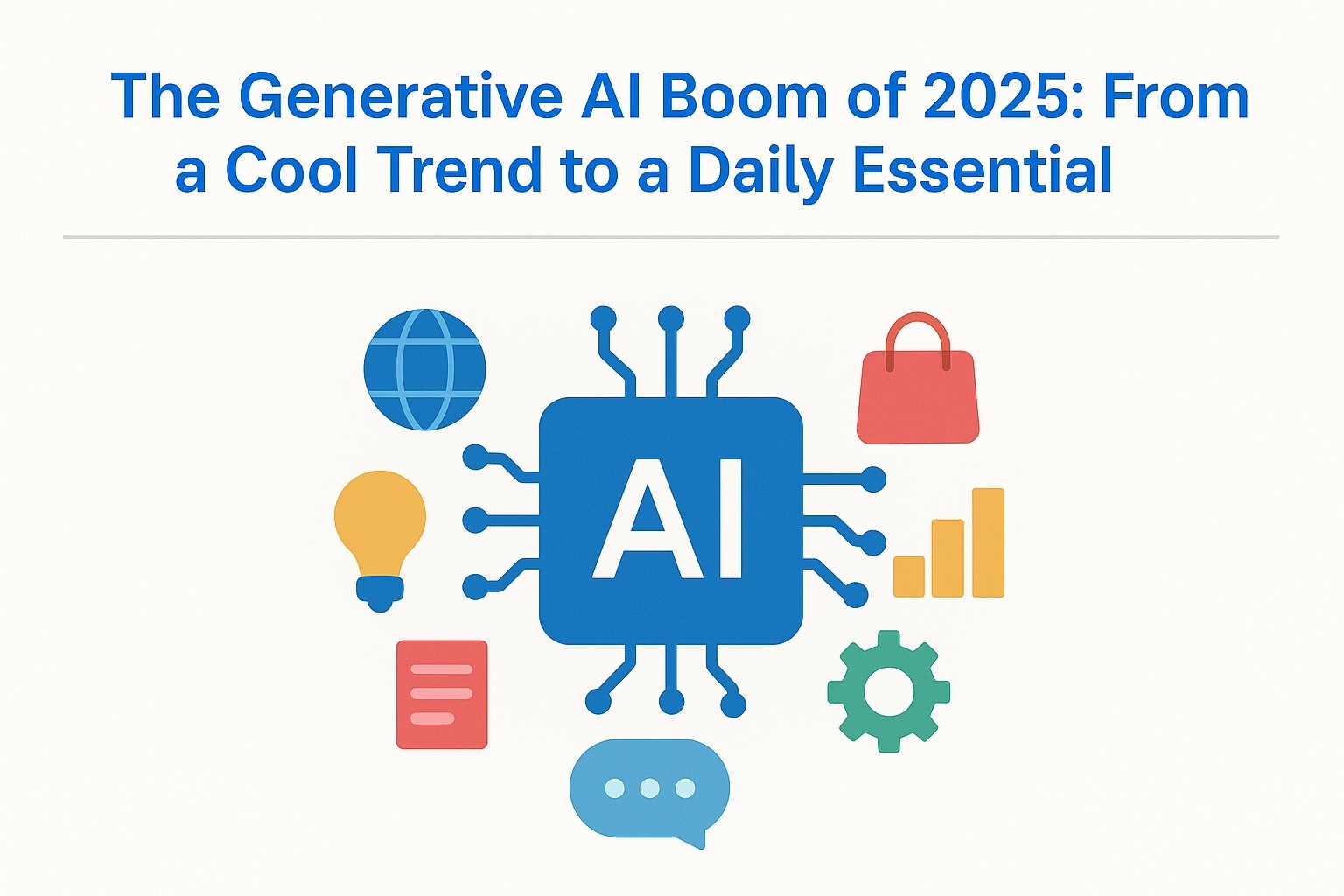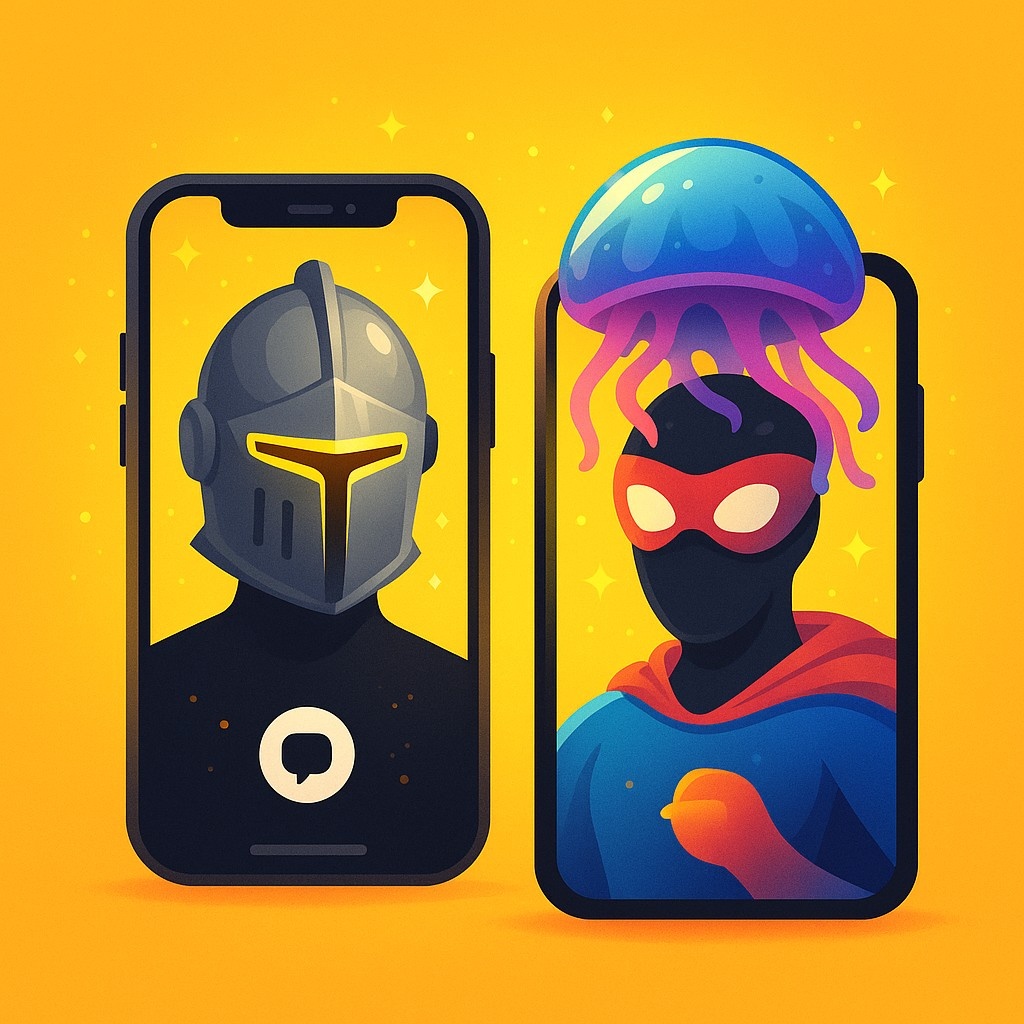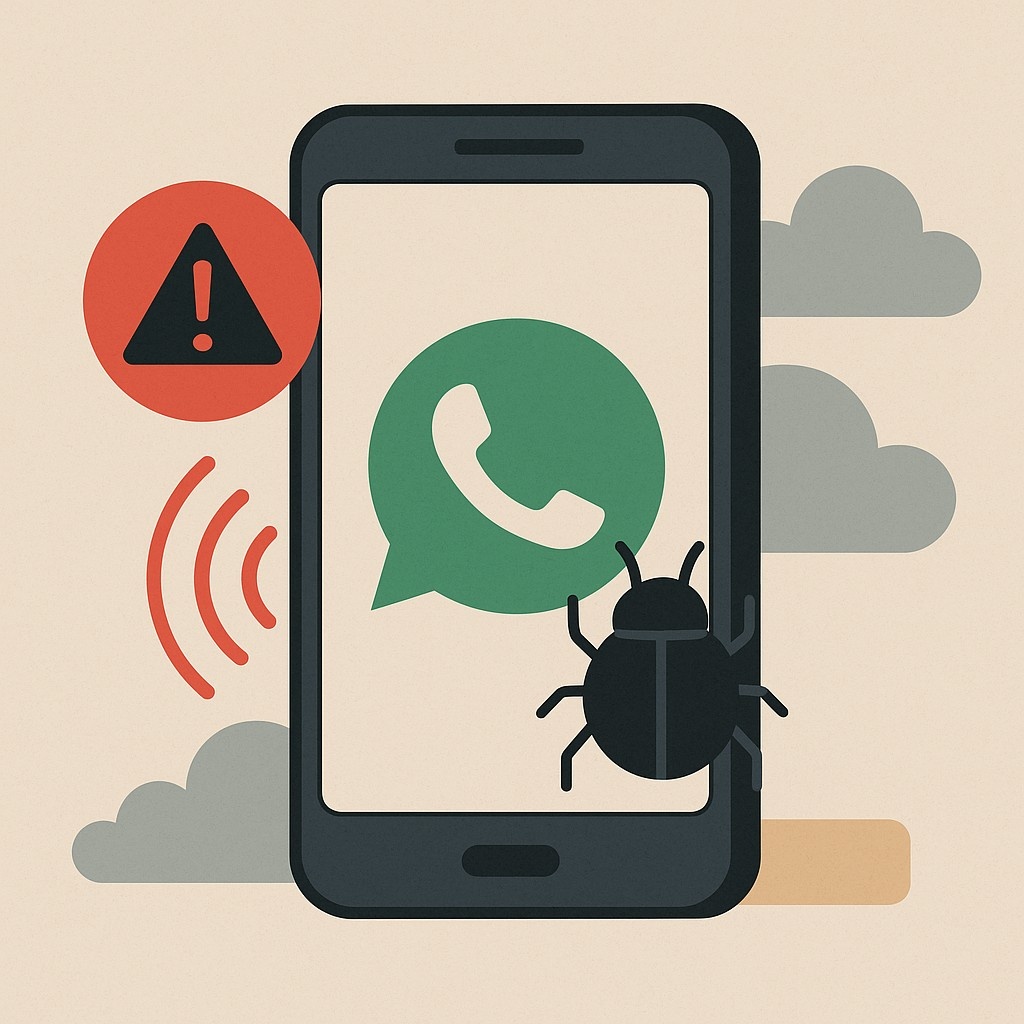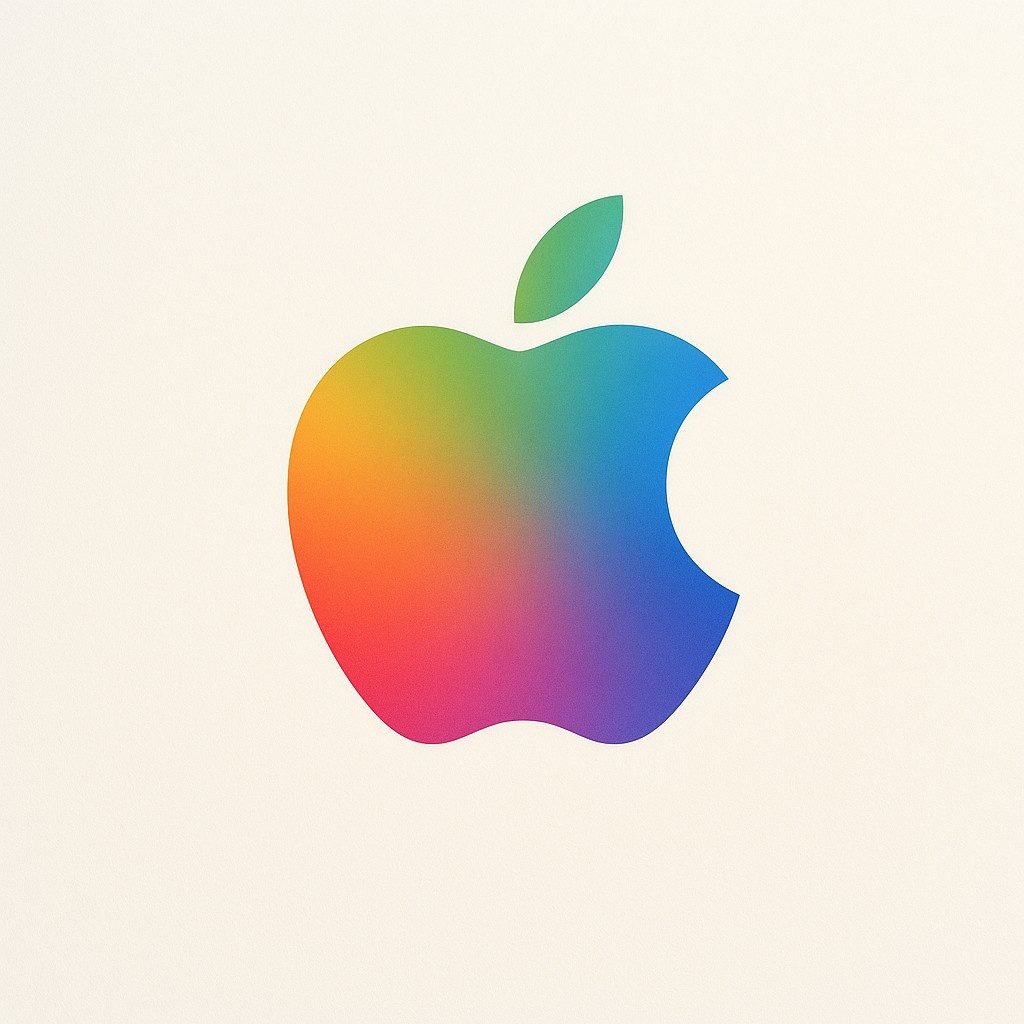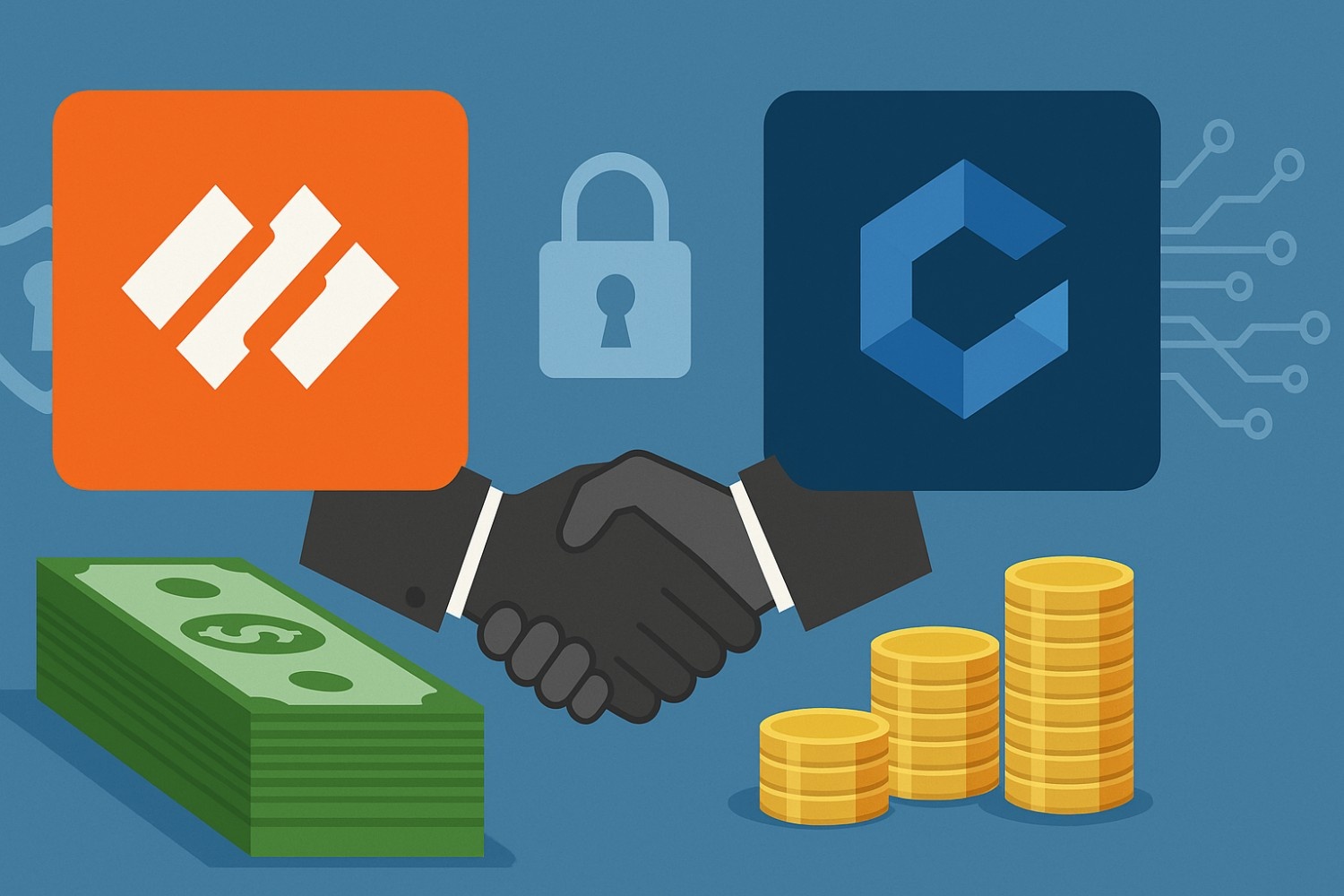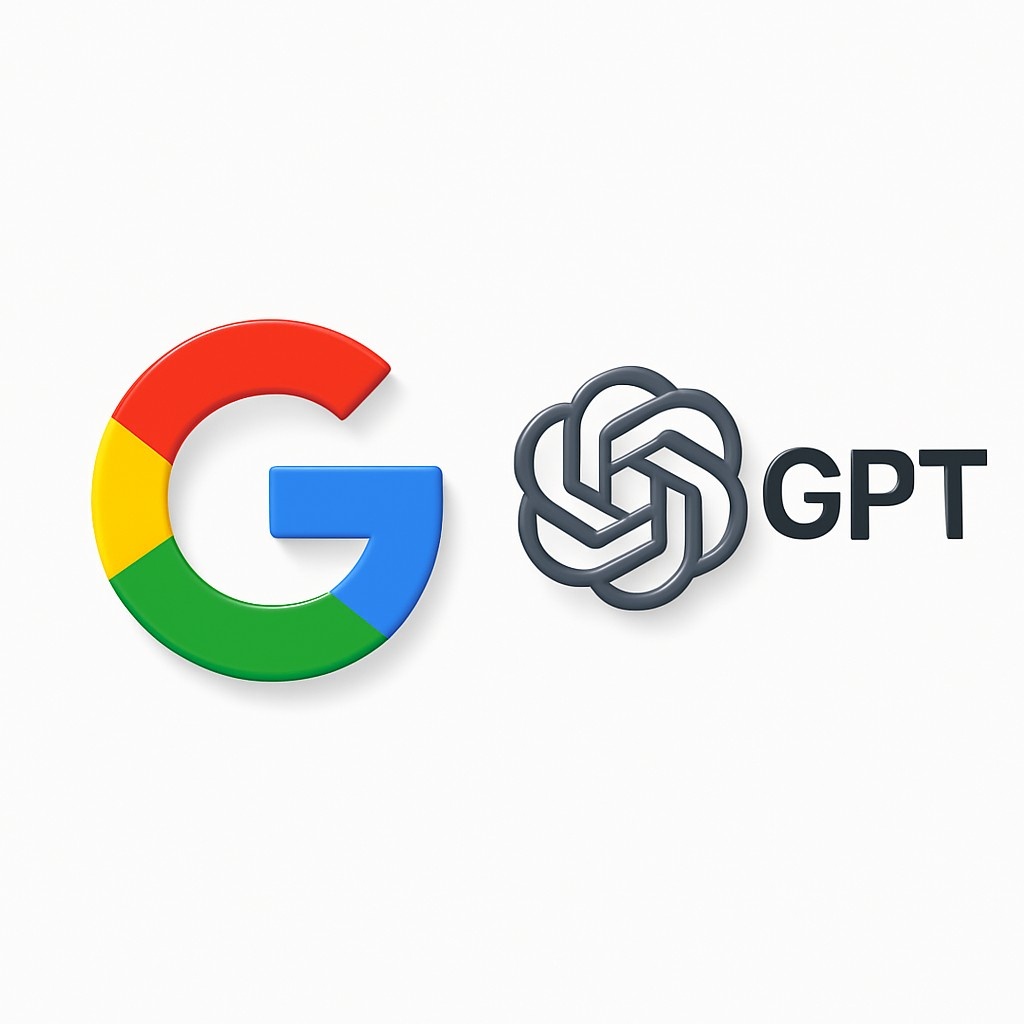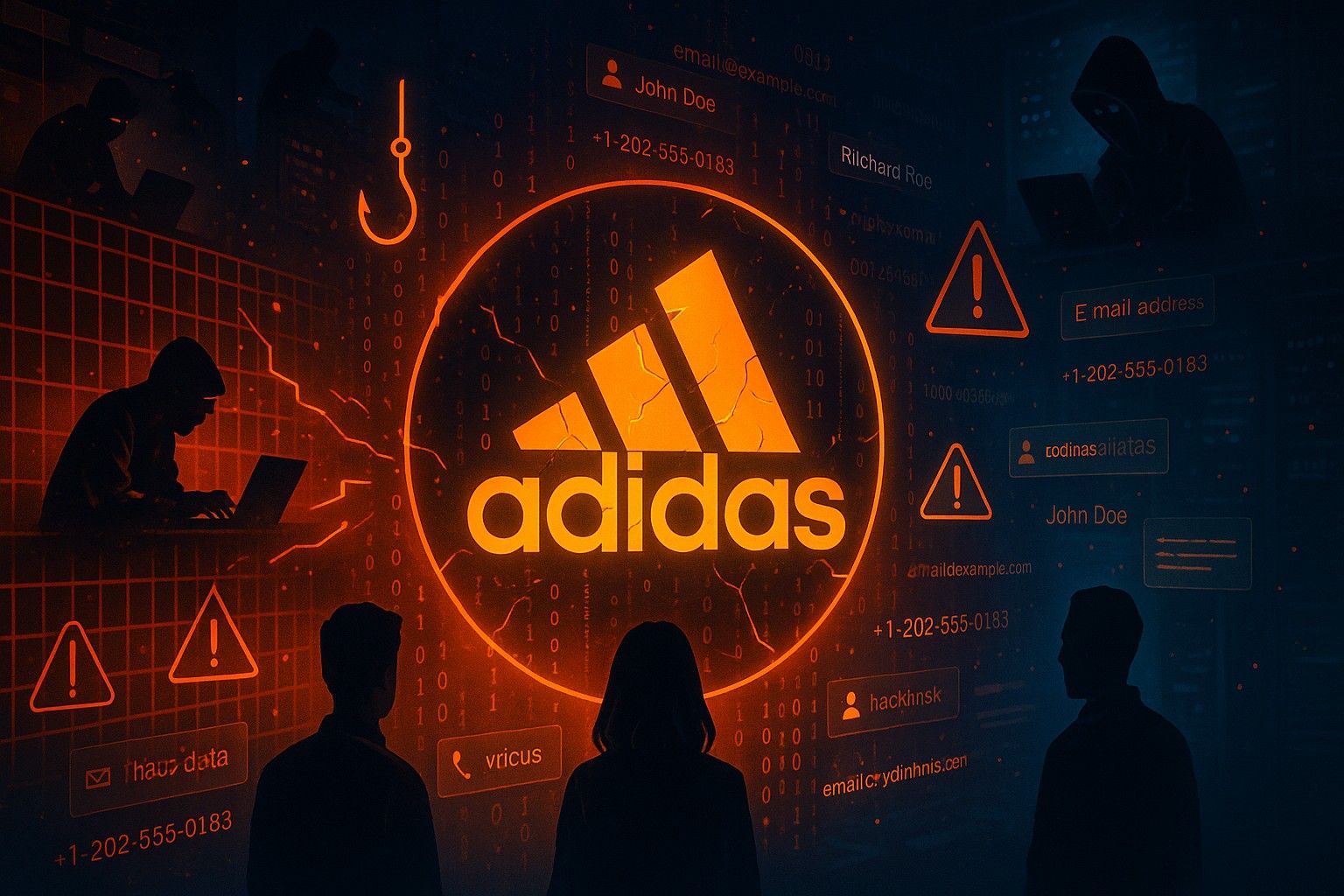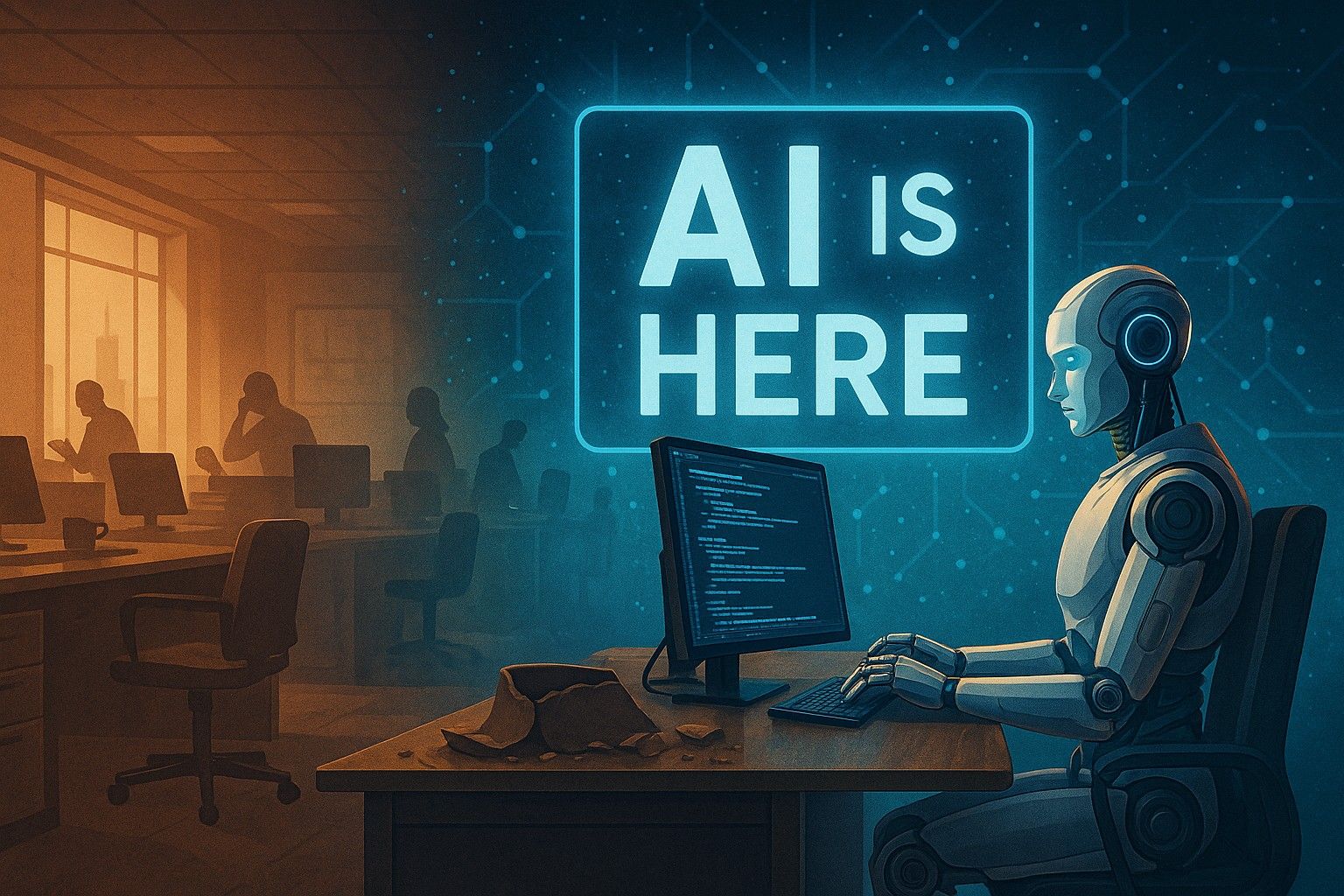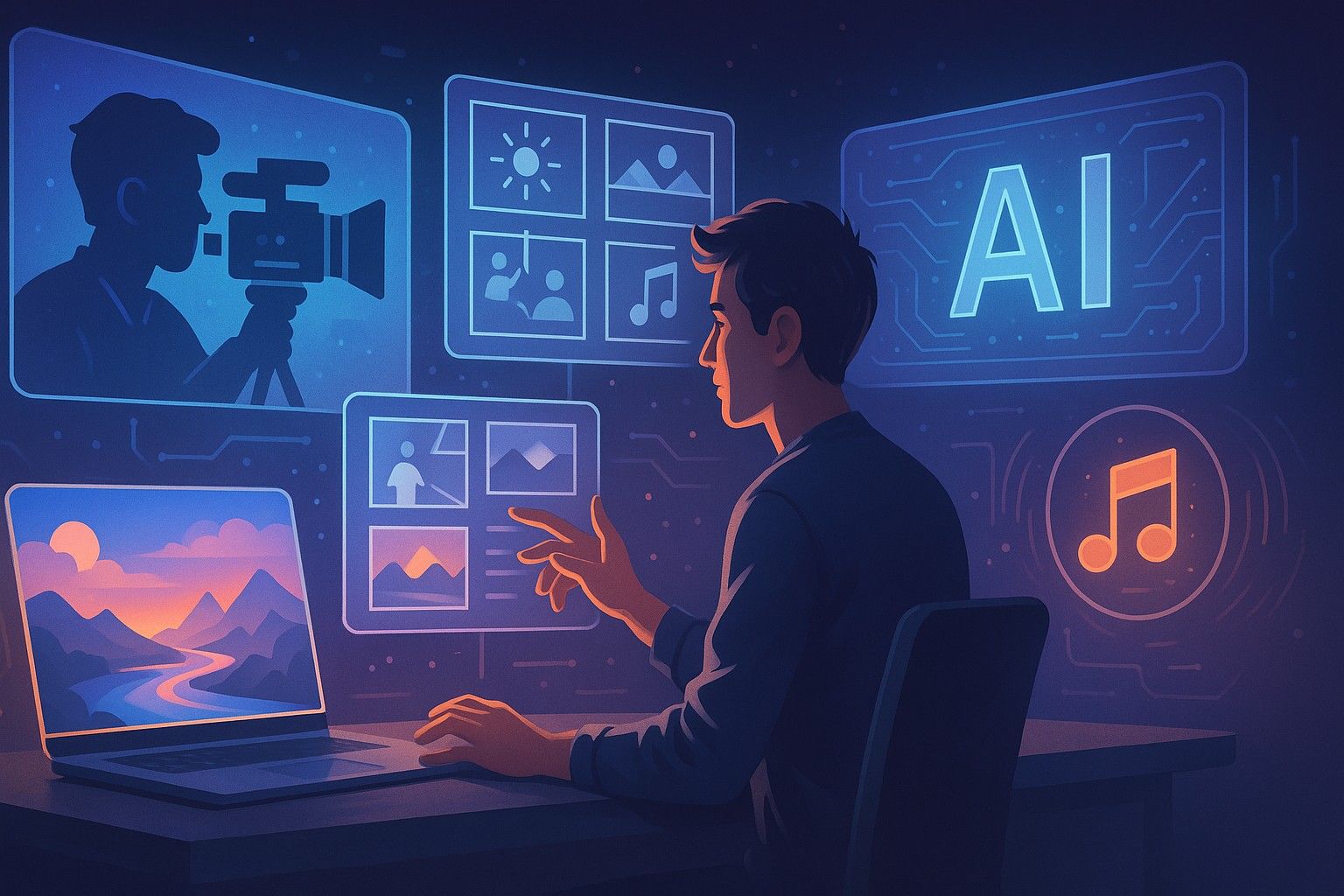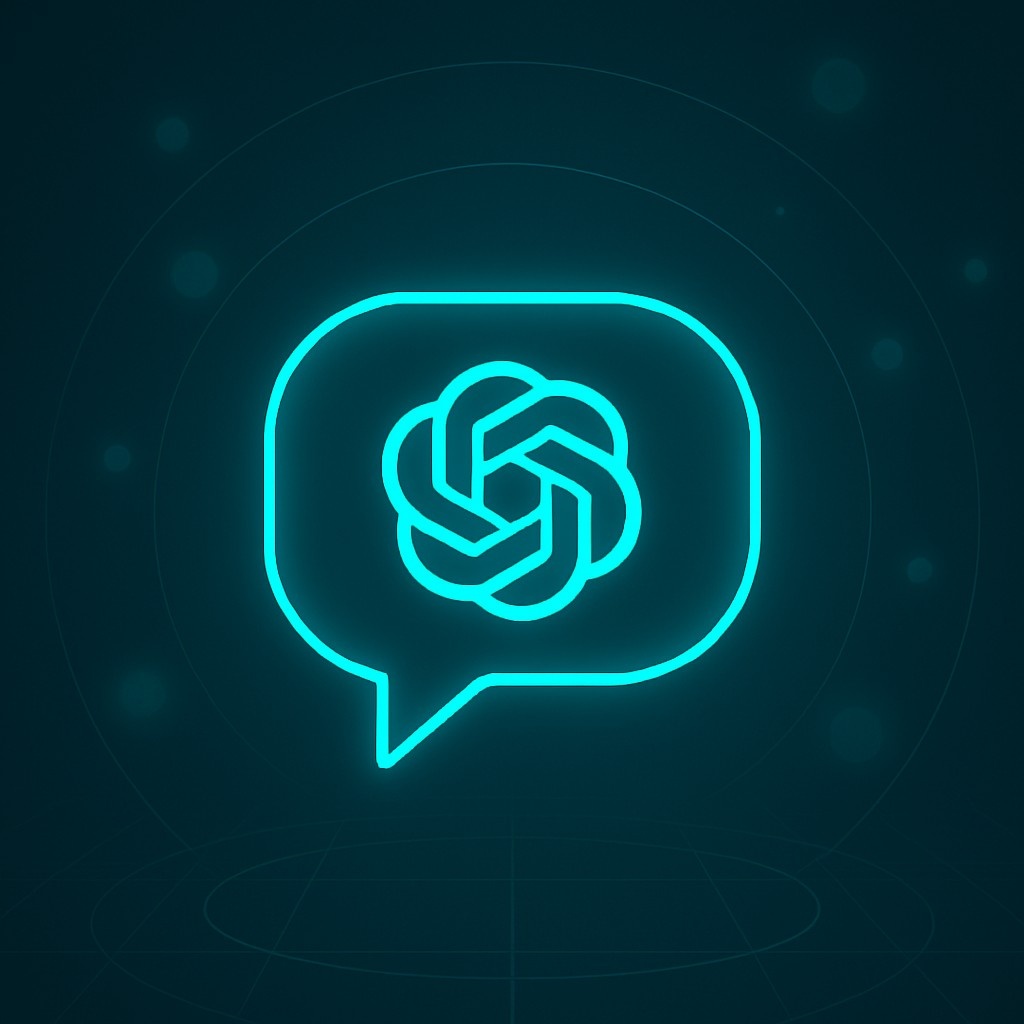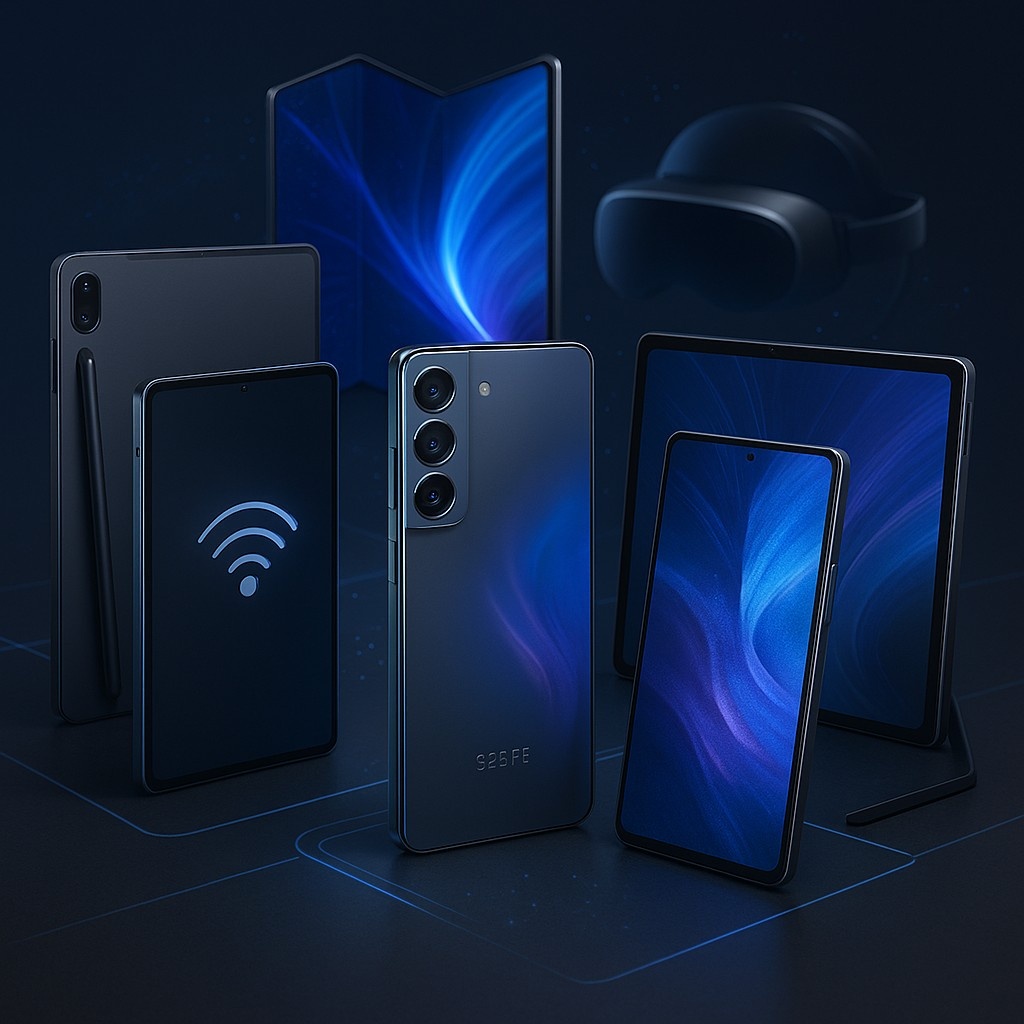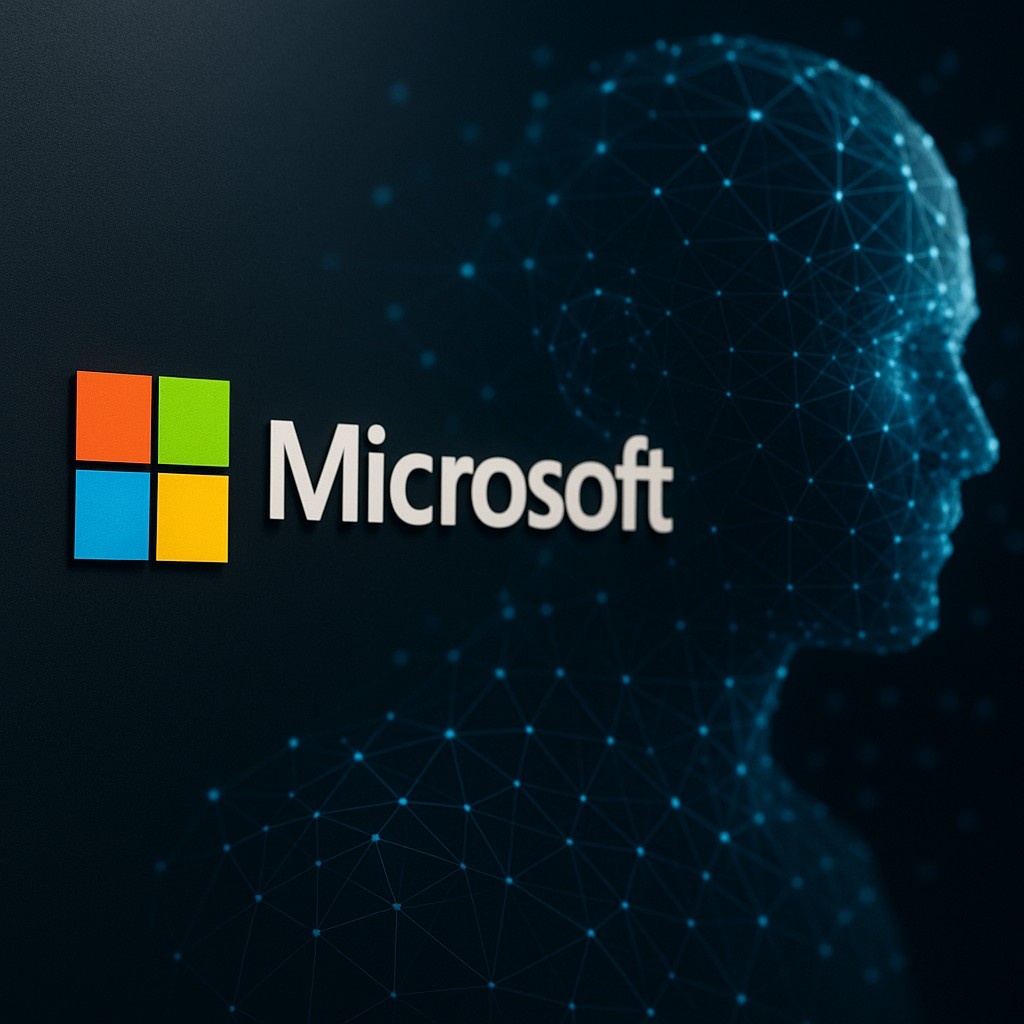The Generative AI Boom of 2025: F rom a Cool Trend to a Daily Essential
Artificial intelligence (AI) is no longer just for tech geeks or researchers — it’s become a part of everyday life for millions. By the middle of 2025, generative AI is everywhere: helping people search the web, manage work tasks, learn new skills , and even shop online. What began with the launch of ChatGPT in late 2022 has turned into a worldwide AI explosion. People are using AI in countless ways: professionals are changing how they work, investors are chasing AI startups, and students now ask chatbots for help with homework or product suggestions. In this article, we’ll look at how generative AI has become essential, who’s leading the charge, and what it means for our world.
AI Is Now Your Daily Assistant — Not Just a Chatbot
A few years ago, AI chatbots were mostly a fun toy. But in 2025, AI assistants are as common as smartphones. OpenAI’s ChatGPT, the tool that started it all, keeps getting smarter. In April, OpenAI added shopping features, allowing users to get personalized product suggestions with images, reviews, and buy-now links — basically turning ChatGPT into your personal online shopper.
That update was a hit. OpenAI said ChatGPT handled over a billion web searches in just one week, showing how deeply AI is woven into how we use the internet. But AI’s role goes far beyond just answering questions. People now rely on it to write emails, summarize documents, and come up with catchy marketing lines. By 2025, two-thirds of people worldwide say they use AI regularly.
Businesses are all in,too. BuzzFeed, for example, doubled its stock value after announcing it would use AI to create customized content. Online retailers now use AI chatbots to guide customers. The message is clear: AI helpers are no longer novelties — they’ve become trusted tools at home and at work.
The AI Model Race: GPT-4.1, Gemini, and More
The widespread use of AI is powered by a fierce competition behind the scenes. Tech giants and startups are racing to build more advanced AI models. OpenAI, which launched the movement, continues to push forward. In April 2025, it released GPT-4.1 — a more capable version that’s better at coding, following instructions, and handling large texts. GPT-4.1 can now understand and analyze up to 1 million tokens at once — which means it can read entire books or large chunks of code in one go. That’s a huge win for developers and researchers.
Not to be left behind, Google has made big AI moves too. After ChatGPT’s breakout, Google launched its own family of AI models, Gemini. At the end of 2024, Google CEO Sundar Pichai described this as the start of a “new agentic era,” where AI agents are built into everyday apps like Search, Android, and YouTube. Google’s updated Gemini Flash model can even understand images and sound. Want to point your phone at something and get a live explanation? That’s what Google’s Project Astra is working on.
Other major players are joining the race. Meta (formerly Facebook) has shared its LLaMA models openly with researchers and is developing its next-generation tools. Microsoft, a major investor in OpenAI, is adding GPT-4 to Office apps like Excel and Word through its “Copilot” feature. Startups around the world are creating focused AI tools for images, videos, and programming.
All this competition is paying off. AI models are improving fast — they’re smarter, more flexible (handling text, images, and audio together), and more tailored to user needs.
Generative AI Becomes Part of Everyday Life
The numbers say it all. A global survey across 47 countries found that over half of business leaders are already using AI tools like ChatGPT.
- China is leading the way: 83% of companies using generative AI. That’s partly because China moved quickly to develop its own AI tools due to restrictions on using foreign platforms.
- In the U.S.: around 65% of companies were using AI by mid-2024, and adoption has only grown since then.
The tools are easier to use, and their benefits are clearer than ever.
Regular users are feeling the impact too. Office workers now ask AI to write reports and summarize meetings, giving them time for more important tasks. Developers lean on AI coding tools to write and debug code. Content creators use it to quickly generate articles, social media posts, or even short videos. Students get tutoring help, and gamers create custom characters and storylines with the help of AI.
The tech that once felt futuristic is now just another part of daily life. According to the International Monetary Fund, AI could increase global GDP by 0.5% each year through 2030. That’s a big boost.
Businesses across industries — from healthcare to finance — are becoming more efficient thanks to AI. Retailers using AI for marketing say they’ve cut down their content creation time from weeks to just days.
In the creative world, AI is helping artists and musicians brainstorm and develop ideas faster than ever.
The Good, the Challenges, and What’s Next
There’s a lot to be excited about, but there are challenges too. Sometimes AI gives wrong or biased information — anyone who’s used it knows that. Newer models are more accurate, but still not perfect. Trust in AI is growing, but not fully there yet — a survey by the University of Melbourne found that 58% of people worldwide still feel somewhat uneasy about AI.
Another issue is cost. These large AI systems need tons of computing power and energy. Companies like OpenAI are working to make models more efficient and cheaper to run, and competition (especially in places like China) is driving down prices.
There are also concerns about jobs. Will AI replace workers? So far, AI has mostly taken over repetitive tasks, not whole jobs. Many businesses are pairing humans with AI — for example, using AI to suggest responses to customer service agents. That makes people more productive without removing the human touch.
But as AI takes on more complex thinking tasks, the workforce will need to evolve. New job roles — like prompt engineers or AI trainers — are already emerging. Business leaders estimate that 40% of their staff will need new training in the next three years due to AI. The upside? Once the routine work is automated, people can focus on more creative and strategic jobs.
Final Thoughts
The first half of 2025 has proven it: generative AI is not just a trend. It’s a core technology shaping how we live, work, learn, and create. In just a few years, we’ve gone from experimenting with AI chatbots to using AI every day — for shopping, writing, coding, and more.
This is a global revolution. Every industry, every country is feeling the impact. The challenge now is to guide this powerful technology in the right direction — and that’s exactly what regulators and governments are beginning to focus on.
